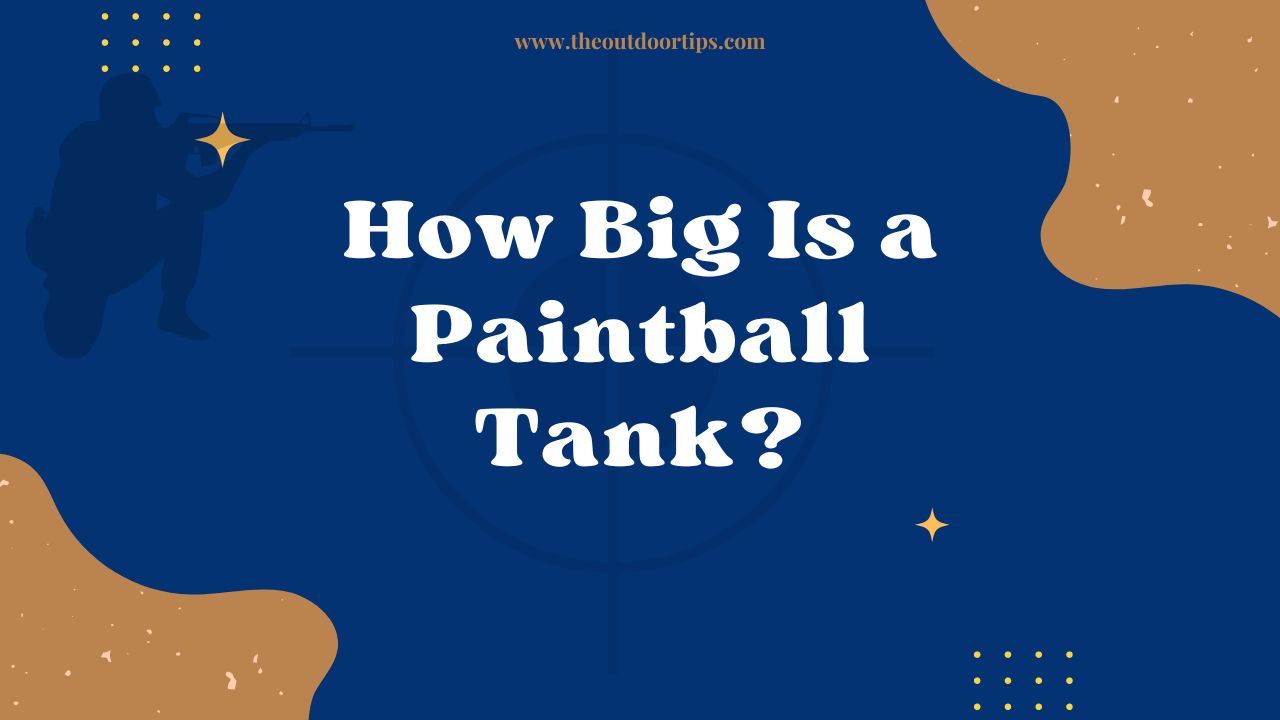A vital component of any paintball setup is the paintball tank, which serves as the propellant source for your marker. The size of a paintball tank can significantly affect your gameplay, determining how many shots you can fire before needing a refill. In this comprehensive exploration, we delve into the world of paintball tanks, uncovering their various sizes, capacities, and the implications of choosing the right tank for your style of play. From understanding different tank types to exploring compatibility with markers, this article aims to equip you with the knowledge needed to make informed decisions about paintball tanks.

How Big Is a Paintball Tank?
Short Answer: Paintball tanks vary in size, ranging from 13 cubic inches (ci) to 90 ci or more. Tank sizes impact capacity, air source, and marker compatibility. Different types of tanks, such as CO2 and high-pressure air (HPA), offer distinct benefits for various playing styles.
The Range of Paintball Tank Sizes
Paintball tanks come in a range of sizes, typically measured in cubic inches (ci). The most common tank sizes include:
- 13 ci to 20 ci: These compact tanks are often used in pump and stock class markers. They prioritize portability and ease of use over capacity.
- 45 ci to 48 ci: These are among the most popular tank sizes. They offer a balance between capacity and size, making them suitable for a wide range of markers and playstyles.
- 68 ci: Another popular choice, this size provides ample capacity for most paintball scenarios without being overly bulky.
- 90 ci and above: Larger tanks are commonly used by players who engage in long scenarios or tournaments, where extended air supply is essential.
Impact of Tank Sizes on Capacity and Air Source
Capacity and Shots:
The size of your paintball tank directly impacts the number of shots you can fire before needing a refill. Smaller tanks offer fewer shots, while larger tanks provide more shots per fill.
Air Source:
Paintball tanks are typically filled with either high-pressure air (HPA) or CO2. The tank’s size affects its compatibility with different air sources. Larger tanks often hold more air and are better suited for extended gameplay.
Exploring Different Tank Types: CO2 and HPA
CO2 Tanks:
CO2 tanks store carbon dioxide in liquid form. As the liquid CO2 converts to gas, it propels the paintballs. CO2 tanks are available in various sizes, with 9 oz, 12 oz, and 20 oz being common.
CO2 tanks are favored for their affordability and accessibility. However, they are temperature-sensitive, and extreme cold can cause pressure inconsistencies and impact marker performance.
High-Pressure Air (HPA) Tanks:
HPA tanks store compressed air at high pressures, typically ranging from 3000 to 4500 psi. These tanks are favored for their consistency, accuracy, and reliability. HPA tanks come in various sizes, including 48 ci, 68 ci, and larger.
HPA tanks are not as affected by temperature fluctuations as CO2 tanks. They offer stable pressure and consistent performance, making them a popular choice for both recreational and competitive players.
Choosing the Right Tank Size for Your Playstyle
Recreational Play:
For casual players, a 45 ci or 48 ci tank offers a balanced choice. These sizes provide enough shots for enjoyable gameplay without the bulk of larger tanks.
Recreational players who engage in occasional matches and prioritize portability often find 45 ci and 48 ci tanks to be suitable. These tanks offer a sufficient number of shots for recreational play without being too cumbersome to carry.
Competitive Play:
Competitive players may opt for a 68 ci tank. This size strikes a balance between capacity and size, allowing players to focus on accuracy and strategy.
In competitive play, players need a reliable air source that can sustain them through intense matches. A 68 ci tank offers enough shots for competitive gameplay without compromising mobility.
Tournament Play:
For tournament enthusiasts, a larger tank, such as a 90 ci or higher, ensures extended air supply. This is crucial for maintaining performance during extended sessions.
Tournaments demand endurance and strategic gameplay. Larger tanks provide the necessary air capacity to last through multiple matches without the need for frequent refills.
Marker Compatibility and Considerations
Tank Threads:
Ensure that your paintball tank’s threading is compatible with your marker. Different markers have varying thread types, such as standard and metric.
Size and Balance:
Consider the weight and balance of your setup when choosing a tank size. Larger tanks may provide more shots but can also add weight to your marker setup.
Final thoughts:
Paintball tanks are not just a source of propellant; they are an integral part of your paintballing experience. From choosing the right tank size to considering air source and marker compatibility, your decision can impact your gameplay, performance, and overall enjoyment. Whether you’re a casual player seeking portability, a competitive enthusiast focusing on accuracy, or a tournament player demanding endurance, the size and type of your paintball tank play a pivotal role in shaping your experience on the field.
